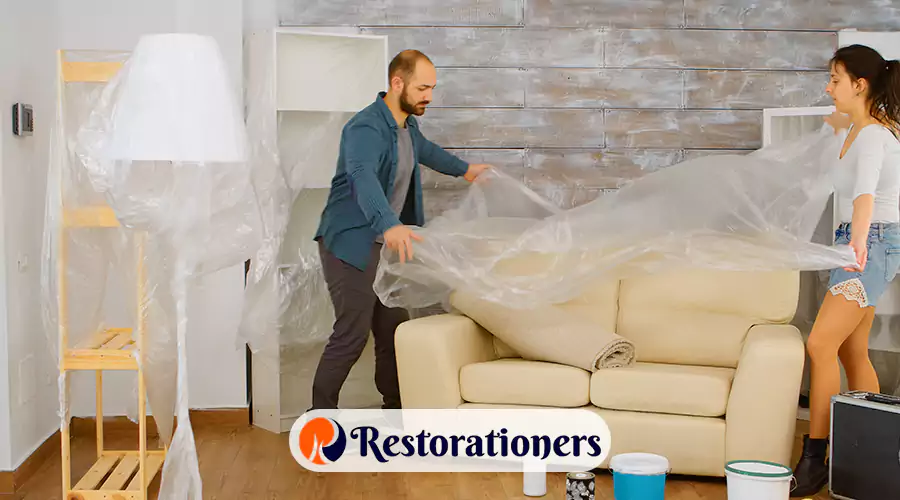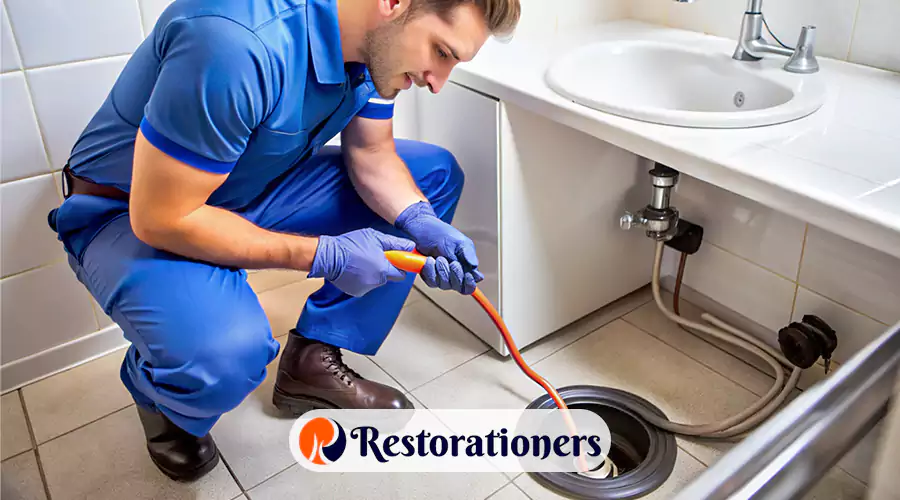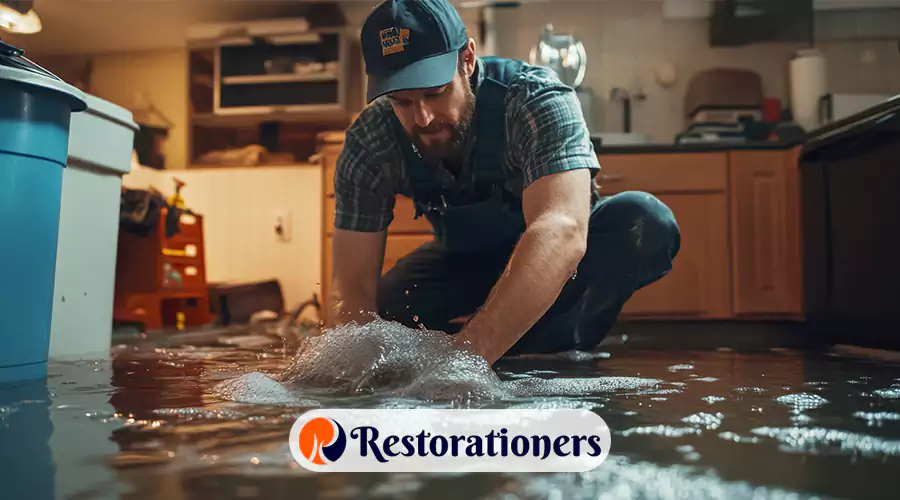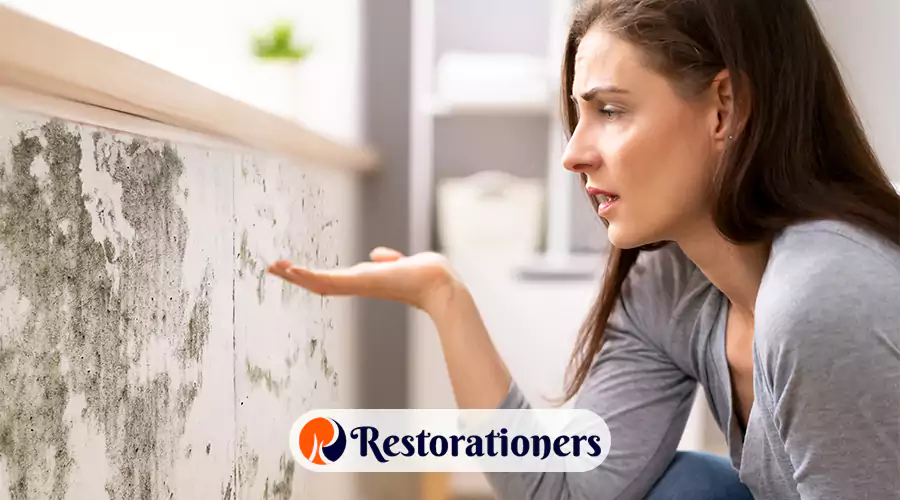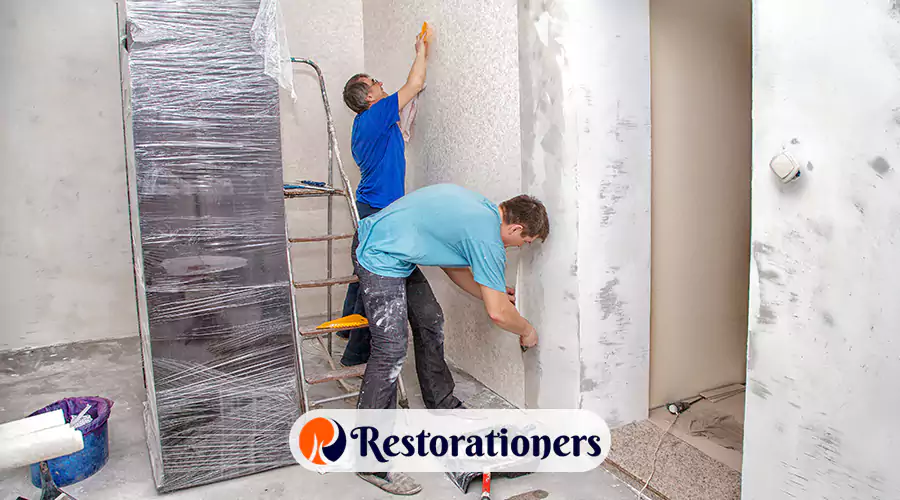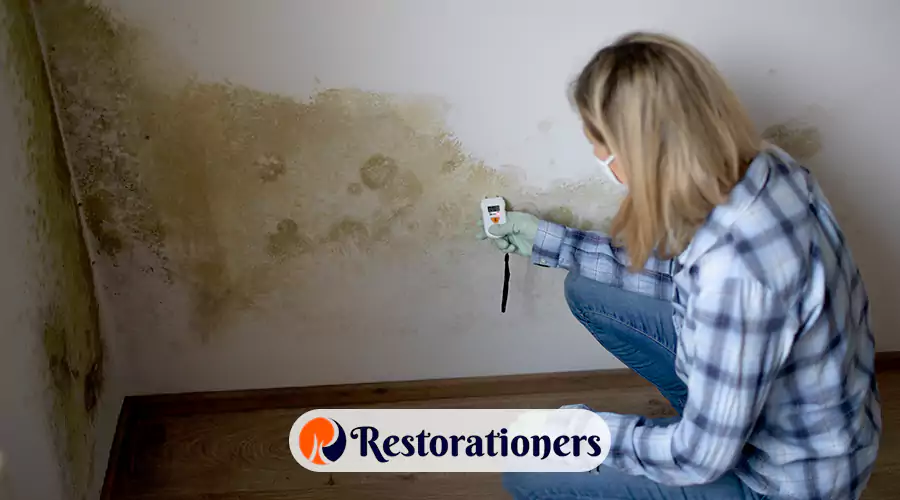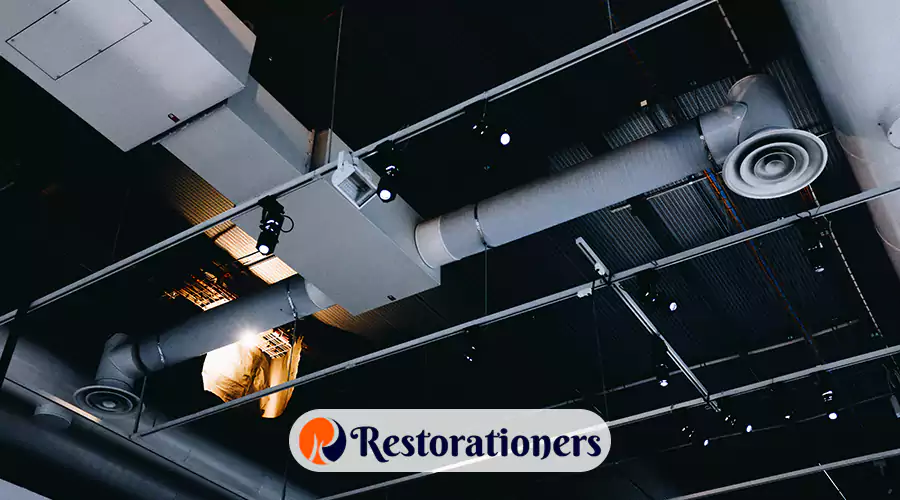When your home has been leaked, flooded, or has burst a pipe, the initial hours after the incident can be a massive difference in whether or not you manage to salvage what you have or not. Quick and accurate action may transform a total loss into a controlled recovery.
In this guide, the professional stepwise tips on how to salvage furniture and personal property after the water damage are offered, such as practical ways of drying, drying methods in furniture damaged by water, and important measures to stick to in the restoration of the home. The aim: to assist you in saving your property in a safe, efficient, and minimally harming way.
Understanding the Impact of Water Damage
Assess the extent of water exposure before starting to clean up. Determine the water source and identify the area of impact - floors, upholstery, wooden furniture or walls. This evaluation is based on safe restoration and assists you in determining what to salvage.
| Type of Water |
Risk Level |
Source Example |
Action Required |
| Clean Water |
Low |
Burst pipe, rainwater |
Dry and disinfect surfaces |
| Gray Water |
Moderate |
Washing machine, dishwasher |
Use protective gear; disinfect thoroughly |
| Black Water |
High |
Sewage backup, outdoor floodwater |
Call professionals for emergency cleanup |
Always use protective equipment when handling gray or black water, as they may contain contaminants.
Why Acting Quickly Matters
Every moment counts when dealing with water damage. The sooner you begin restoration, the greater your chance of saving furniture and household items. Slow drying allows moisture to settle, wood to swell, and mold to develop.
Properly maintained solid wood furniture is generally more water resistant than particleboard or upholstered furniture but only if addressed immediately. Record the damage immediately in photos, video and item lists to claim on insurance and use this data to recover which items should be repaired first.
Step 1: Assess the Situation Immediately
You need to assess the extent of damage: see what is visible and what is not in sight before deciding on whether to move or dry something.
- Determine what was put into water and how long they have been wet.
- Identify the type of water (clean, gray, or black).
- Place high-value or sentimental things at the top and deal with them first.
- Make sure it is safe to enter a place - observe possible electrical risks, building damage, and loose floors.
- Initiate insurance documentation.
A relaxed and knowledgeable evaluation set the basis of successful recovery.
Step 2: Remove Excess Water and Dry the Environment
Dry the affected environment before addressing individual items.
- Use pumps or wet vacuums to remove standing water.
- Increase airflow with fans and dehumidifiers; open windows if weather allows.
- Remove wet carpets, rugs, or padding, which can trap moisture and promote mold.
- Avoid walking through the area until drying is underway to prevent re-soaking or contamination.
Proper environmental drying prevents recurring moisture and supports successful furniture restoration.
Step 3: Salvaging and Drying Furniture by Material Type
Knowledge on your furniture materials helps in knowing what is salvageable and the way to treat each one.
Solid Wood
- Has the best chance of recovery.
- Dry slowly to prevent cracking or warping.
- Stand pieces upright and elevate them on blocks.
- Use fans and dehumidifiers; maintain moderate room temperature.
- Avoid direct heat or sunlight.
Veneered or Paneled Furniture
- Remove backs and drawers; keep doors slightly open for airflow.
- Dry carefully to prevent veneer separation or bubbling.
- Do not refinish until fully dry.
Upholstered Furniture
- Remove cushions, covers, and legs to allow airflow.
- Detach fabric where possible and air-dry both frame and fabric.
- Use low-speed fans; avoid direct sunlight.
- If mold or odor persists, professional reupholstery may be necessary.
Particleboard or MDF
- These materials absorb water quickly and often lose structural integrity.
- If swelling or crumbling occurs, replacement is usually required.
| Furniture Type |
Drying Technique |
Notes |
| Solid Wood |
Elevate, use fans and dehumidifiers |
Avoid direct heat; prevents warping |
| Veneered Panels |
Remove backs and drawers; allow airflow |
Prevent veneer separation |
| Upholstery |
Air-dry fabric and frame separately |
Avoid direct sunlight; use low-speed fans |
| Carpeted Padding |
Remove and discard padding |
Usually unsalvageable after flooding |
Step 4: Deep Cleaning and Sanitizing
Clean and disinfect furniture and surfaces once mostly dry (after being in contact with gray or black water) to inhibit the growth of molds and bacteria.
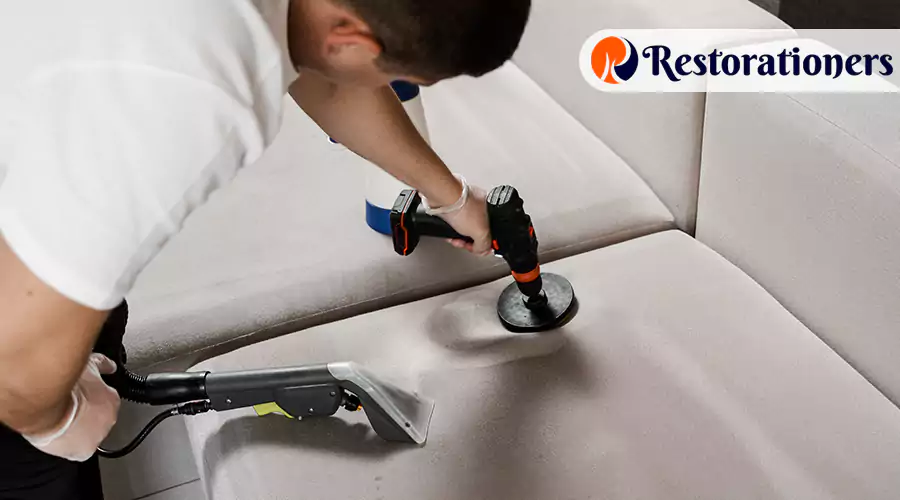
- Apply low-concentration detergent or upholstery cleaner on fabrics.
- Clean the wood surfaces with soft cloth and a mild soap solution and dry immediately.
- Do not use bleach on wood or fabric - it can be discoloring or damaging.
- Wipe joints, corners and undersides with antimicrobial cleaner.
- Wood conditioner or protective sealant should be applied to the wood after cleaning to avoid absorption of moisture in future.
Step 5: Inspection, Repair, and Restoration
- Inspect after cleaning, observe structural or surface damage.
- Inspect for veneer, loose joints or warping.
- Fix minor problems on your own or refer to a furniture repair expert.
- In terms of fabrics, look at discoloration, or an unpleasant odour in the material - look at reupholster where necessary.
Clean up sand and refinish wooden surfaces to regain appearance and protection. Maintain records and receipts of insurance.
Step 6: Mold Prevention and Long-Term Monitoring
Monitoring even after drying is important to eliminate any hidden forms of molds.
- Keep the humidity in the home at a level of less than 50 percent (preferably 30 to 45 percent) with a hygrometer.
- Check behind furniture and under it every week or even thrice a month.
- Check the wood parts that are not visible.
- Coat the bottom of furniture with anti-mold paints particularly when it has been exposed to flood water.
- Take action immediately in case of musty smell or dampness.
Quick Reference: Furniture Drying Checklist
| Item Type |
Action Steps |
Estimated Drying Time |
Professional Help |
| Wood Furniture |
Wipe, elevate, air-dry |
48–72 hours |
Optional |
| Upholstery |
Remove covers, air-dry, dehumidify |
72–96 hours |
Recommended |
| Carpets/Rugs |
Extract water, replace padding |
48–72 hours |
Often |
| Electronics |
Disconnect, air-dry, service |
Varies |
Yes |
| Books/Photos |
Air- or freeze-dry carefully |
24–48 hours |
Optional |
When to DIY and When to Call Professionals
You can usually manage the initial stages — removing water, drying smaller items, and controlling humidity.
However, call a certified restoration specialist if:
- The water was contaminated (gray or black water).
- Furniture has severe structural or mold damage.
- Large areas of the home or built-in furniture are affected.
- You’re unsure about safety or proper sanitation.
Professional restoration ensures deeper cleaning, faster drying, and safer outcomes.
Final Recovery Checklist
Keep this checklist handy during cleanup:
- Assess all affected items
- Remove standing water
- Begin environmental drying (fans, dehumidifiers)
- Safely remove and elevate furniture
- Use correct drying techniques by material
- Clean and sanitize all surfaces
- Inspect and repair damage
- Apply protective treatments
- Monitor humidity for several months
- Complete documentation for insurance
- Call professionals when necessary
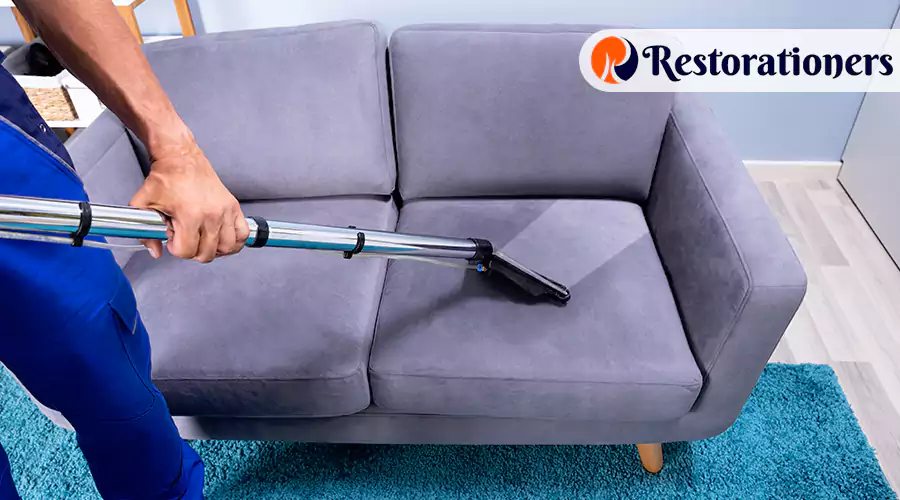
Conclusion
Water damage is very difficult to recover, but with fast response, drying and cleaning you can save a lot and recover your home safely.
Under this guide, you will complete the process of a systematic, efficient water damage restoration and flood cleanup and prevention plan, as well as a second life to your furniture and belongings.
 Damage-Specific RestorationGeneral Restoration ServicesSpecialized RestorationCleanup & Removal ServicesBack to Main MenuDamage-Specific RestorationWater Mitigation Water Damage Flood Damage Basement Flood Clean Up Storm Damage Restoration Hurricane Damage Restoration Winter Storm Damage Restoration Water Leak Detection Services Fire Damage Smoke Damage Restoration Soot Removal Mold Damage Mold Remediation Biohazard Cleanup Earthquake Restoration Mudslide Damage Restoration Disaster RestorationBack to Main MenuGeneral Restoration ServicesEmergency Restoration Services Commercial Restoration Services Residential Restoration Services Advanced Restoration Building Restoration House Restoration Restoration Contractors Structural Restoration 24 Hour Emergency Water Damage RestorationBack to Main MenuSpecialized RestorationDocument Restoration Hardwood Floor Refinishing Marble Restoration Kitchen Restoration Bathroom Restoration Roof Restoration Wood Restoration Wood Floor Restoration Tile Restoration Concrete Restoration Foundation RestorationBack to Main MenuCleanup & Removal ServicesOdor Removal Services Air Duct Cleaning Hazardous Waste Disposal Asbestos Abatement Demolition Contractors Emergency Board Up
Damage-Specific RestorationGeneral Restoration ServicesSpecialized RestorationCleanup & Removal ServicesBack to Main MenuDamage-Specific RestorationWater Mitigation Water Damage Flood Damage Basement Flood Clean Up Storm Damage Restoration Hurricane Damage Restoration Winter Storm Damage Restoration Water Leak Detection Services Fire Damage Smoke Damage Restoration Soot Removal Mold Damage Mold Remediation Biohazard Cleanup Earthquake Restoration Mudslide Damage Restoration Disaster RestorationBack to Main MenuGeneral Restoration ServicesEmergency Restoration Services Commercial Restoration Services Residential Restoration Services Advanced Restoration Building Restoration House Restoration Restoration Contractors Structural Restoration 24 Hour Emergency Water Damage RestorationBack to Main MenuSpecialized RestorationDocument Restoration Hardwood Floor Refinishing Marble Restoration Kitchen Restoration Bathroom Restoration Roof Restoration Wood Restoration Wood Floor Restoration Tile Restoration Concrete Restoration Foundation RestorationBack to Main MenuCleanup & Removal ServicesOdor Removal Services Air Duct Cleaning Hazardous Waste Disposal Asbestos Abatement Demolition Contractors Emergency Board Up